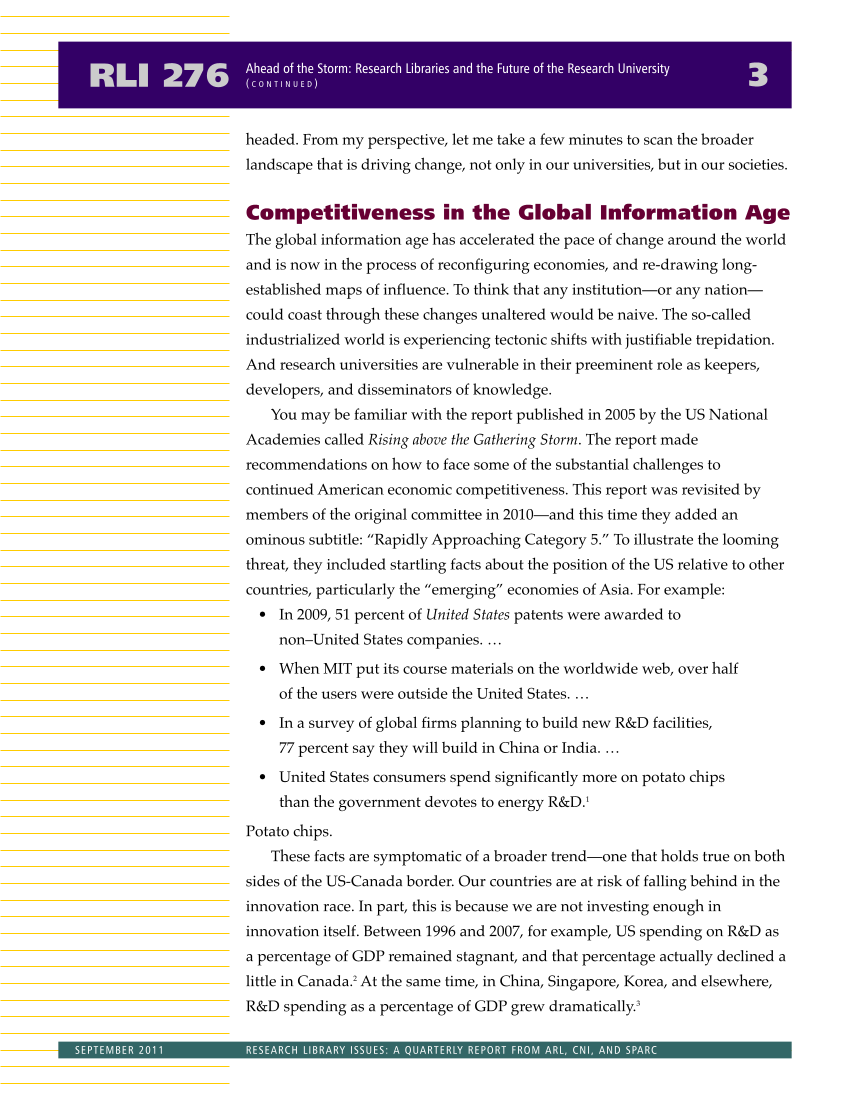headed. From my perspective, let me take a few minutes to scan the broader landscape that is driving change, not only in our universities, but in our societies. Competitiveness in the Global Information Age The global information age has accelerated the pace of change around the world and is now in the process of reconfiguring economies, and re-drawing long- established maps of influence. To think that any institution—or any nation— could coast through these changes unaltered would be naive. The so-called industrialized world is experiencing tectonic shifts with justifiable trepidation. And research universities are vulnerable in their preeminent role as keepers, developers, and disseminators of knowledge. You may be familiar with the report published in 2005 by the US National Academies called Rising above the Gathering Storm. The report made recommendations on how to face some of the substantial challenges to continued American economic competitiveness. This report was revisited by members of the original committee in 2010—and this time they added an ominous subtitle: “Rapidly Approaching Category 5.” To illustrate the looming threat, they included startling facts about the position of the US relative to other countries, particularly the “emerging” economies of Asia. For example: • In 2009, 51 percent of United States patents were awarded to non–United States companies. … • When MIT put its course materials on the worldwide web, over half of the users were outside the United States. … • In a survey of global firms planning to build new R&D facilities, 77 percent say they will build in China or India. … • United States consumers spend significantly more on potato chips than the government devotes to energy R&D.1 Potato chips. These facts are symptomatic of a broader trend—one that holds true on both sides of the US-Canada border. Our countries are at risk of falling behind in the innovation race. In part, this is because we are not investing enough in innovation itself. Between 1996 and 2007, for example, US spending on R&D as a percentage of GDP remained stagnant, and that percentage actually declined a little in Canada.2 At the same time, in China, Singapore, Korea, and elsewhere, R&D spending as a percentage of GDP grew dramatically.3 RLI 276 3 Ahead of the Storm: Research Libraries and the Future of the Research University ( C O N T I N U E D ) SEPTEMBER 2011 RESEARCH LIBRARY ISSUES: A QUARTERLY REPORT FROM ARL, CNI, AND SPARC


































